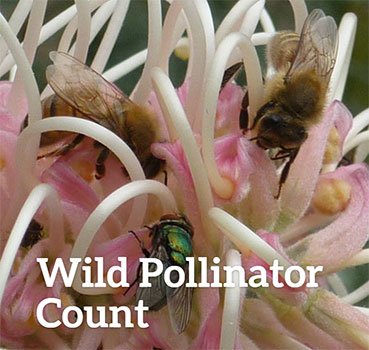Join our Wild Pollinator Count
/Looking for an excuse to spend ten minutes observing the pollinators in your garden or nearby? Of course you are!
I'm sure you know that as well as European honeybees, there are loads of other pollinators. Not just my personal favorites (native bees!) but also all sorts of beetles, flies, butterflies and more. And relatively little is known about them.
Dr Manu Saunders, an ecologist at Charles Sturt Uni, and I have teamed up to create a pollinator observation project. We hope to gather some data about local pollinators as well as trial this approach. We'd love you to get involved.

The concept is simple - on a sunny day, sometime in the week of November 9th to 15th, spend ten minutes watching some flowers. Then share your observations of the pollinators you see on our project website - www.wildpollinatorcount.wordpress.com.
You can do just one ten-minute count, or do a few. You might observe in the same or different spots, or on different flowers, during the week. We've even made a printable tally sheet, to help you keep track. Or you can flex your own record-keeping skills to gather your data (c'mon, I'm not the only one who loves a challenge that involves recording details, surely!?).
There are lots of resources and photos on the website to help you identify the insects you see - and even if you're not sure of the identification, you can record the details you did notice. You can also upload photos, if you wish.
We are focussing the count on Albury/Wodonga, but would love to have contributions from North East Victoria and Southern NSW too, so please pass this on to anyone you think may be interested in participating.
As this is the first time we are running it, we also welcome any positive or negative feedback about the project and/or ideas as to how we might improve on it in future!
For more information please visit the Wild Pollinator Countwebsite. Go on - give it a crack!





